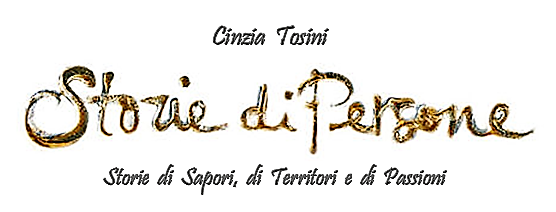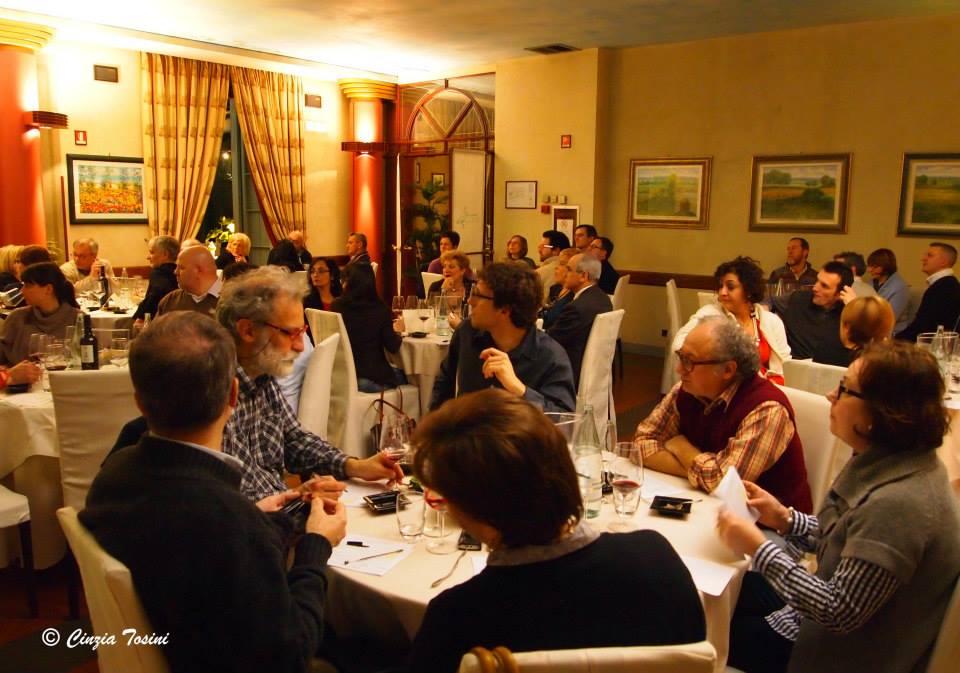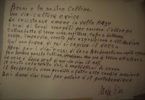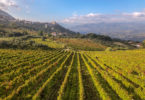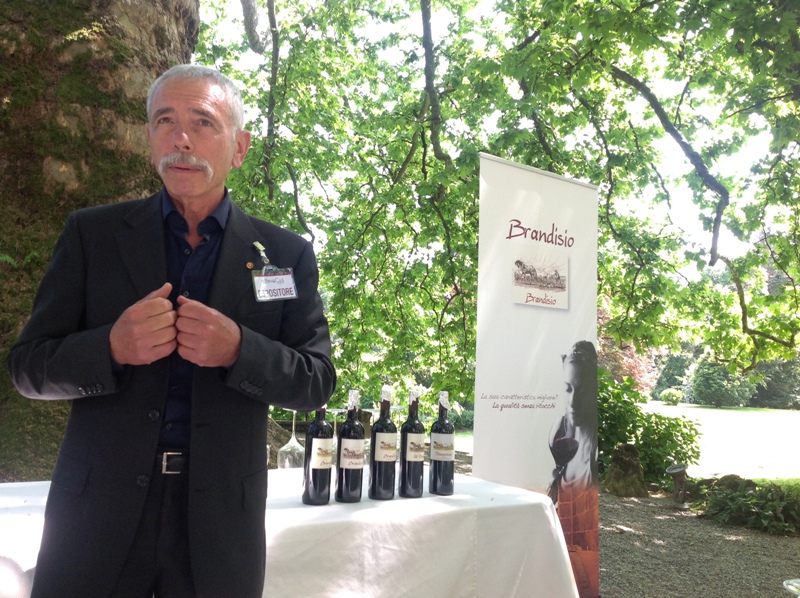Discussion of Roger Sixth
Once Josko Gravner mi have detto: “Cynthia, for me the wine is white”. I'm not a big as him, but I feel especially when the wine is red.
I like irruento like a wave that throws the rock ... strong as the handshakes of the peasants candid look you in the eyes ... wise come gli uomini e le donne che lavorano la terra e che amo ascoltare con le loro storie.
The wine that I love is this. A wine irruento, strong, wise ... a wine with its aromas makes me travel, and its flavor reminds me. A few nights ago I met, was rosso, and native Friulian.
The Friuli, a land that reminds me of his people, to my roots. People say many difficult. The truth is quite different, i friulani vanno capiti. They are a people tied to the land ... a nation that opens the heart, when he hears that the heart in front of you, batte sincero.
Lùnis
Timp furlan! Na scussa umida di sanbùc, the stela
nassuda nenfra il fun dai fogolàrs, na sera pluvisina – un pulvìn di fen.
tai ciavièj o in tal sen di un frut ch’al ven sudàt da la ciampagna ta la sera rovana.
Monday. Time Friulian! A moist rind of elder, a star was born in the midst of the smoke from the hearths, in a drizzly evening - a crock of hay in your hair or in the chest of a boy, that is sweaty from the countryside into the night on fire. Pier Paolo Pasolini da ‘The Best of Youth’
Well, although this region is known for its large white, There are native to rediscover the authentic red and especially to taste. The occasion was propitious few nights ago to Restaurant 'The Faun' Cesano Maderno (MB). During serata, with the guidance of his friend Roger Sixth, I had the pleasure of tasting wines from some varieties saved from extinction.
Native Friulian wines RED
of Roger Sesto
The vines native Friulian red berry, mainly di parliamo Refosco, Schioppettino, Tazzelenghe, Pignolo, Terrano, considerable importance since cultivate that have managed to survive the fads. This is due to the fierce character of the people of Friuli that, firmly, have decided to maintain an authentic local heritage of grapes, in potential danger of extinction by preserving the quality and cultural importance.
A typical, however, closely linked to local Friulian: In fact, all the wines of the region, especially the reds, retain a certain rawness and aggression linked in some way to the same character of the inhabitants of the region and the local gastronomy, strong and spicy, borrowed from the Slavic cuisine. And maybe it was the kitchen – by the strong flavors – to promote the survival of these vines hard and gritty.
The red wines from Friuli are strong character, wild, frank, names levigati, Net, recognizable and, until about twenty years ago, also very rustic. Even the two varieties – so-called international – most widespread in the region, il Merlot ed il Cabernet Franc, than elsewhere, especially the first, have a flavor profile more graceful, do not talk in Bordeaux, but also in Tuscany and even in South Tyrol, here are particularly "green" and aggressive, an local which in this case really makes a difference.
Today, the basic matrix of these wines is still and always the same: its what the uve, the local (obviously) pure; however, at the level of the cellar, or by an oenological point of view, something has changed. The maceration is conducted with more caution, temperatures and times controlled and calibrated. The barrels were on average shrunken, Although it is not necessarily barrels, and their length of service has dropped considerably, coming more frequently restarted. It 'was in essence a "hard core" traditional, on which they are applied gradually increasingly innovative techniques. Sometimes - and more often – these developments are bringing to call into question since all the roots, inducing, for example to carry out operations - such as the vinification and aging in amphorae – constitute a real leap in the distant past oenology, that refer to the traditions of winemaking georgic-Caucasian.
- It Schioppettino comes from the Eastern Hills. There are two versions about the origin of his name. The first makes the etymology derived from the noise caused by 'explosion of its berries are crushed when. The second refers to the bottles that broke out in the cellar when, during spring, in some of them resumed fermentation. Either way is characterized by a coloration not very charge, certainly less than that of the Refosco, to have hints of red fruit in prevalence, topped with a spicy pepper spice. The taste is characterized by a certain acidity, which helps to highlight the tannins.
- The Refosco (it is a "grape-population", of which the most interesting representative is constituted by what Peduncolo Red), This largely on the eastern hills and a little in the Grave, reaching up to the province of Treviso, is characterized by a spicy hot, added to a known wild plant and hints of red fruits and concentrates, the color is intense, and the taste is characterized by a relatively low acidity, which makes the tannins less angular.
- The Tazzelenghe dwelling mainly on the Eastern Hills, has affinities with the Refosco, but in addition is characterized by rather strong and complex animal notes, and especially by a very firm tannins and acidity "sharp", hence the origin of the name. To tame the vehemence of tannin is practically mandatory aging in an appropriate timber and / or a slight drying on the vine or in the loft.
- The Pignolo, perhaps a distant relative of the Valtellina Pignola, has a soft spiciness, rather moderate and elegant, enriched with an aromatic and almost balsamic. It’ one of the most noble grape varieties of Friuli.
- The Terrano, also called the Carso Terrano or Refosco d'Istria or the Carso and Istria, is the grape that demands long pruning, denotes vigor and abundant and constant. The leaf, Medium size, appears roundish, pentagonal, e trilobata; the cluster, large, long 20 cm., typically has the shape of a pyramid with a wide base, winged, moderately compact, presents the berries slightly elliptical, of medium size with skin deep blue very waxy, a powder’ thin, consistent; the pulp is dissolved simple flavor, sweet and a little’ acidula. Gives rise to a wine of intense ruby red color with purplish-strong fragrance and light vinous nose, the palate is dry, bodied, average alcohol, acidulo, tannico, overall quite pleasant. It is cultivated exclusively in karst areas of Gorizia and Trieste.
As far as longevity is generally wanting wines that are also ready soon, but with the ability to withstand a few years of bottle, about a dozen.
Fotografia e Vigneti di Marco Felluga – Gradisca d’Isonzo
